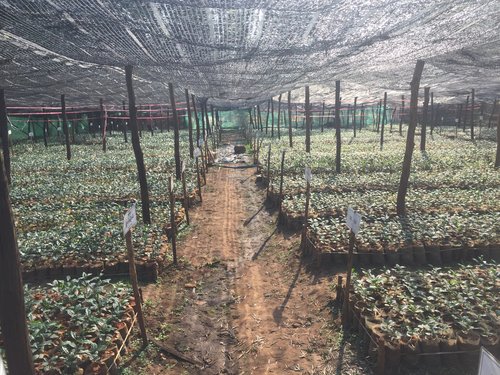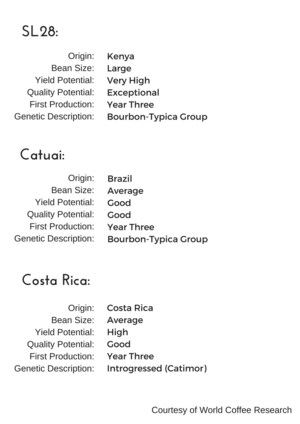A Myanmar coffee analysis from Shwe Padauk. The Shwe Padauk lot comes to us from both the Ywangan and Pyin Oo Lwin regions of Myanmar. These regions are at the forefront of Myanmar’s increased specialty coffee production. These regions are about 100 kilometers away from each other, and have different approaches to production. In Pyin Oo Lwin, coffee is produced on larger private estates, usually between 200 and 400 acres in size. Ywangan is dominated by much smaller farms, which average around only 2 acres. Though both regions are over 1,200 meters above sea level, Ywangan is a little higher than Pyin Oo Lwin. Additionally, it is slightly harder to access due to much more mountainous terrain.
This coffee gets its name from the padauk flower found in the regions of Pyin Oo Lwin and Ywangan. Locals consider this flower a symbol of the beginning of a new season, with the first blossoms of the padauk usually coming around the start of the rainy season. This is also the beginning of the coffee export season, and the new year celebration called Thingyan.
Green Coffee Analysis
This lot is made up of the same varietals as the Shan State Ywangan lot profiled here. Back in the late 1980’s Myanmar’s government imported several tons of coffee seeds from other coffee-producing countries, with a particular emphasis on high-quality, yet robust plants. The Shwe Padauk lot is made up of SL28 from Kenya, and the Costa Rica and Catuai varietals from Costa Rica. These three varietals gave the farmers of Pyin Oo Lwin and Ywangan flexibility in their offerings and a diverse set of trees to grow.
This coffee’s stats line up well with other specialty sizes. Screen size and green coffee appearance are both quite normal, with good preparation and few (if any) defects. Density is a little on the higher end, so be sure to adjust your roast profile as necessary to compensate.
Myanmar Coffee Roast Analysis
We decided to roast this coffee along side the other Myanmar lot we received. To start, we went with a basic washed profile that we’ve used before. That provided a starting point for the roast, but didn’t exactly hit the cupping profile we were looking for. We went back to the drawing board, and put this coffee through two new profiles.
The first attempt tried to develop the heavier, sweeter notes of the coffee by extending the overall development time to almost a third of the overall roast. This worked out fairly well, and we were rewarded with a smooth, sweet cup (notes on that below).
The second roast of the coffee was shorter overall, but had a longer post-crack development time. The development-to-time ratio (DTR) of this roast was higher than the first. However, it ended up muting some of the sweeter fruit notes in the final cup.
Myanmar Coffee Brew Analysis
We brewed this coffee twice; once through a Chemex and once as a single-origin espresso. The Chemex gave us a smooth, sweet cup, with notes of butterscotch, red apple, toasted marshmallow, and graham cracker.
The espresso here gave us a heavier, sweeter shot with notes of butterscotch, orange rind, and honey. For those familiar with brewing espresso, you’ll notice our yield of 27 grams demonstrates more of a “ristretto” or concentrated shot. This higher concentration worked well, probably in part to the coffee’s very structured and prominent sweetness. Feel free to play around with the recipe if you’re using this coffee as a single origin espresso; it has a lot to offer and encourages some exploration!
Availability
The coffee used in this analysis is reference number 38342. Browse available coffee here.













